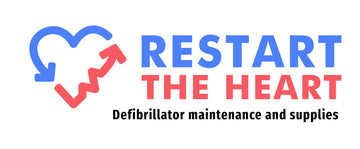Public Access Defibrillators: A Guide to Implementing PAD Programs in Community Spaces
Sudden cardiac arrest (SCA) is a leading cause of death globally and can strike without warning, regardless of age or fitness level. Rapid access to defibrillation within the critical first minutes of SCA can significantly improve an individual's chances of survival. In recent years, public access defibrillators (PADs) have become increasingly recognised as vital life-saving resources in community spaces. PADs provide quick and easy access to automated external defibrillators (AEDs), empowering bystanders to take immediate action during an SCA event.
As local councils, businesses, and community organisations, there is a social responsibility to create heart-safe environments that protect citizens' wellbeing. Implementing PAD programs across public spaces such as parks, shopping centres, and transport hubs is a crucial step in addressing the risks associated with SCA and increasing survival rates. In this blog, we will delve into the importance of PADs in community spaces and provide insights on how to implement a successful PAD program. This guide will cover the benefits of PADs, essential steps for implementation, addressing potential challenges, and partnering with Restart the Heart for expert guidance and support.
Creating heart-safe spaces within communities is a collective effort, requiring support from various stakeholders to establish comprehensive PAD programs. By understanding the significance of PADs and taking the necessary steps to implement PAD programs in public spaces, councils, businesses, and community organisations can contribute to saving lives and promoting overall public health within their communities.
Public Access Defibrillators: Saving Lives in Community Spaces
The Importance of PADs
Enhancing Accessibility, Bystander Intervention, and Emergency Response
Public access defibrillators offer numerous benefits for community spaces, addressing critical factors in successful SCA intervention:
- Increased accessibility: Placing AEDs in easily accessible public locations reduces the time taken to retrieve the device and initiate defibrillation, significantly improving survival rates.
- Bystander intervention: With simple instructions and audiovisual guidance, PADs empower bystanders to take life-saving action during a cardiac emergency, even without prior training.
- Enhanced emergency response: PADs augment the local and professional emergency response system, as they enable bystander support and reduce response times, ensuring the best possible outcome during an SCA event.
With these benefits in mind, it becomes evident that PAD programs play a significant role in improving community safety and survival rates across a wide range of public spaces.
Implementing Public Access Defibrillator Programs
Key Steps for Establishing a Heart-Safe Community
Successfully implementing a PAD program within community spaces requires careful planning and collaboration among stakeholders. Consider the following essential steps:
- Gaining support: Garner backing from local councils, businesses, and community organisations, emphasising the importance of PAD programs in saving lives and promoting community wellbeing.
- AED selection: Choose an appropriate AED for public access use, prioritising ease of use, durability, and reliability. Consider devices with clear instructions, user-friendly designs, and compatibility with local emergency services.
- Strategic location placement: Install PADs in high-traffic areas, near high-risk locations such as gyms or aquatic centres, and in areas with extended emergency response times.
- Maintenance and monitoring: Establish a regular schedule for AED maintenance, in line with manufacturer recommendations, and consider remote monitoring options for compatible devices, ensuring optimal functionality during emergencies.
- Public awareness: Promote the presence and locations of PADs within the community, as well as educate the public on their correct usage and the importance of swift intervention during SCA events.
Overcoming Challenges
Addressing Obstacles and Ensuring Success
PAD programs may face various challenges, from financial constraints to security concerns. However, these can be surmounted with adequate planning and support:
- Funding: Source funding through local councils, grants, or community fundraising initiatives. Communicate the invaluable benefits of PAD programs to gain financial support from the community and stakeholders.
- Vandalism and theft: Encourage community awareness and ownership, and consider protective measures, such as secure AED cabinets with alarm systems or surveillance cameras, to deter potential criminals.
- Emergency response coordination: Work with local emergency services to establish clear guidelines and communication channels during SCA events, including utilising local emergency call centre operators to guide callers to the nearest PADs during an emergency.
Partnering with Restart the Heart
Expert Guidance and Comprehensive Solutions
Restart the Heart offers tailored solutions for PAD programs in community spaces and provides expert guidance to navigate the PAD implementation process:
- AED selection: Choose from a broad range of AEDs suitable for public access use, with devices boasting user-friendly designs, reliability, and compatibility with local emergency services.
- Custom maintenance plans: Collaborate with Restart the Heart to develop a customised AED maintenance plan, including inspections, software updates, and battery replacements.
- Training support: Restart the Heart can connect you with certified training providers to offer community workshops and learning opportunities on proper AED use and CPR techniques.
- Ongoing support: Receive expert advice and troubleshooting support throughout your PAD program journey, ensuring a streamlined implementation process and a successful result.
Conclusion
Implementing a public access defibrillator program is a crucial undertaking for local councils, businesses, and community organisations to create a heart-safe environment within community spaces. The benefits of such programs are undeniable, particularly in their ability to save lives and improve survival rates during sudden cardiac arrest events. By understanding the significance of PADs, taking the appropriate steps to implement PAD programs, and partnering with Restart the Heart to address challenges and harness expertise, local councils, businesses, and community organisations can make a meaningful and lasting impact on the safety and wellbeing of their communities.
Join the movement towards a heart-safe community by partnering with Restart the Heart for your public access defibrillator supplies needs. Contact our expert team today and let us help you create a comprehensive solution tailored to your community's unique needs.

